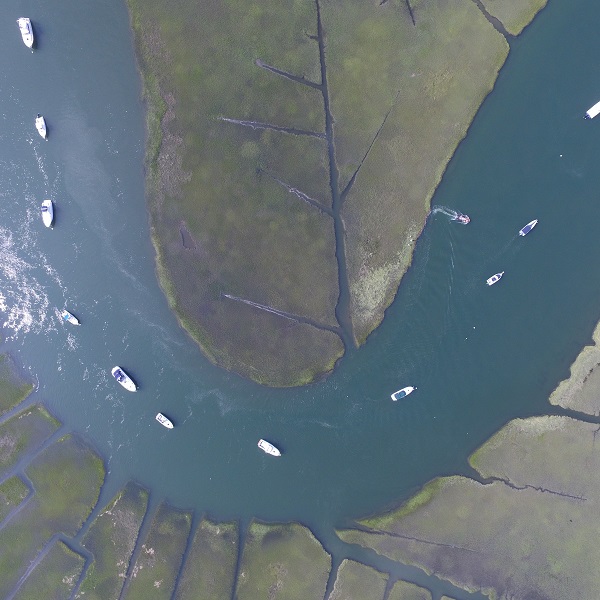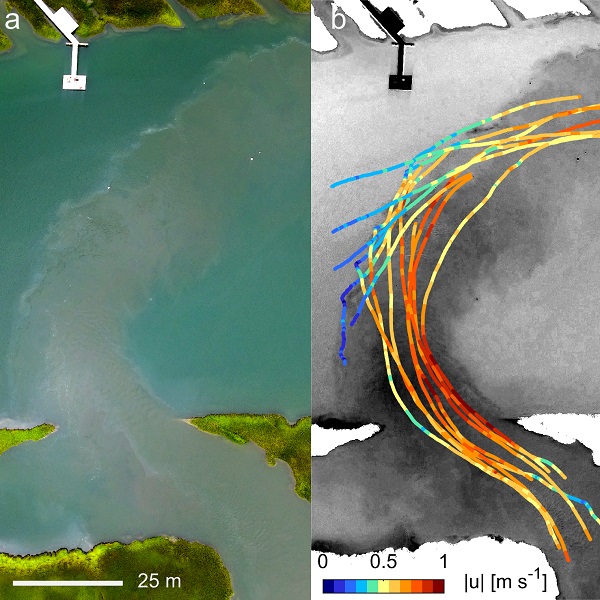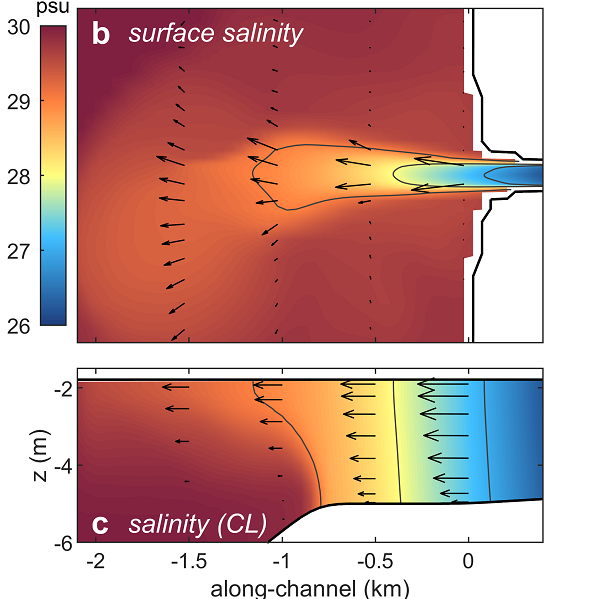


In classic river literature, flow around a bend is directed toward the outer bend at the surface and towards the inner bend at depth, owing to the lateral momentum balance between the centrifugal force and the pressure gradient resulting from the lateral setup. However, in estuaries, salinity differences along and across the channel also affect the hydrodynamics. During a field campaign led by Dr. Wouter Kranenburg, we observed classical lateral circulation during ebb tide and reversed lateral circulation during most of the flood tide. This reversed flow mechanism may have implications on estuarine channel morphodynamics, which is important for understanding the resiliency of estuaries with respect to anthropologic effects such as rising sea levels due to climate change.

The salinity distribution of an estuary is determined by the balance between river outflow, which advects salt out of the estuary, and dispersion, which represents all mechanisms contributing to the transport of salt into the estuary, i.e., down-gradient transport. We conducted a field campaign to determine the effect of tributary creeks on dispersion in the main channel of an estuary. The out-of-phase exchange between the main channel and the creeks results in a strong along-channel density gradient in the creeks. This drives a density-driven exchange flow in the creeks, which ultimately enhances the effective dispersion rate in the main channel by a factor of 2 compared to theoretical predictions. Understanding the controls on estuarine dispersion is important because it determines the length of the salinity intrusion, which impacts local habitats and freshwater availability.

In short, tidally-dominated estuaries, circulation and mixing is dominated by processes which act on a tidally-varying timescale (<12 hours) rather than on a tidally averaged (>12 hours). Using an idealized model built with the Regional Ocean Modeling System (ROMS), I applied a quasi-Lagrangian analyses to analyze dispersive salt fluxes and determine the relative contributions of various topographic regions to the the estuarine salt balance. Notably, by using this novel approach, I quantified how dispersive processes outside the mouth of an estuary drive the salt flux inside the estuary. This research therefore provides a direct linkage between mixing and circulation patterns in an estuary and the coastal ocean.